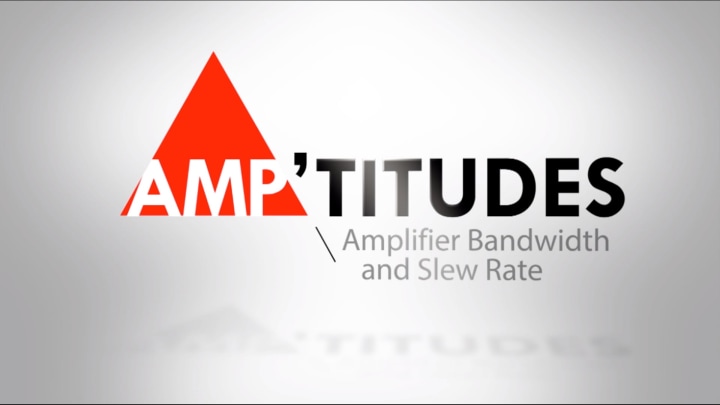Enabling High-Precision Signal Conditioning for the Most Demanding Applications
Precision Op Amp Products
Related Operational Amplifier Articles

“Comparing” Op Amps and Comparators—Can I Use an Op Amp as a Comparator?
Learn more about two common integrated circuits—operational amplifiers and comparators—and explore the possible pitfalls of using an operational amplifier as a comparator.

Why Is Op Amp Start-Up Time Important and How Do I Measure It?
This article will discuss the differences between op-amp start-up time vs. settling time and slew rate. We will also walk through a case study for measuring start-up time.
Automotive-Qualified Operational Amplifiers
The low-power and low-noise performance of our AEC-Q100-qualified amplifiers and comparators makes them excellent choices for automotive designs.

Precision Operational Amplifiers

Amp'titudes Episode 1 - Amplifier Bandwidth and Slew Rate
In this premiere episode of Amp-titudes, we will provide a brief look at the slew rate specification for operational amplifiers, and how this specification applies to an amplifiers performance.

Amp'titudes Episode 3 - Rail to Rail Input Stage
Amp'titudes Episode 3 - Rail-to-Rail Input Stage
This video provides an overview of various input structures for CMOS, voltage-feedback amplifiers, and discusses how these structures affect the amplifier's ability to support “rail-to-rail” operation.

Amp'titudes Episode 5 - Power Supply Filtering
Amp'titudes Episode 5 - Power Supply Filtering
This video highlights the need for power supply filtering within amplifier circuits, specifically the use of bypass capacitors to minimize any unwanted noise at higher frequencies.

Amp'titudes Episode 6 – Rail to Rail Output Stage
This video provides an explanation of the term “rail-to-rail” as it applies to the output of a CMOS amplifier, and discusses how output loading can affect this parameter.

Amp'titudes Episode 10 - Bipolar vs CMOS
Amp'titudes Episode 10 - Bipolar vs CMOS
This video provides a brief look at Bipolar versus CMOS amplifiers and the associated performance trade-offs.

Amp’titudes Episode 12 – Current vs. Voltage Noise
Amp’titudes Episode 12 – Current vs. Voltage Noise
This video provides an overview of an amplifier's voltage and current noise, and walks through a simple example illustrating why both may be critical components of overall system noise.

Amp’titudes Episode 14 – Gas Sensors
Overview of two- and three-terminal gas sensors with a focus on the associated potentiostatic circuit and amplifier selection.